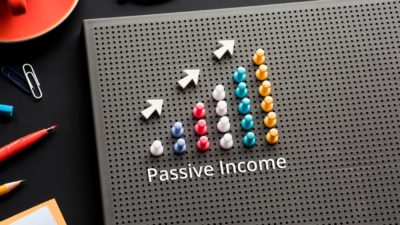 These are tough times for investors in Standard Chartered (LSE: STAN) (NASDAQOTH: SCBFF.US), who have seen its share price tumble 30% in the last 12 months. Many will have bought into the bank to gain access to fast-growing emerging markets, but this play has backfired. The best-performing FTSE 100 bank over the last year was one with the most UK exposure, Lloyds Banking Group, which rose a mighty 60%. So how big a liability is Standard Chartered’s emerging markets exposure?
These are tough times for investors in Standard Chartered (LSE: STAN) (NASDAQOTH: SCBFF.US), who have seen its share price tumble 30% in the last 12 months. Many will have bought into the bank to gain access to fast-growing emerging markets, but this play has backfired. The best-performing FTSE 100 bank over the last year was one with the most UK exposure, Lloyds Banking Group, which rose a mighty 60%. So how big a liability is Standard Chartered’s emerging markets exposure?
Standard Chartered generates 90% of its profits overseas. Global diversification isn’t always a good thing, however, as the bank found in South Korea, where impairments have been rising, and it was forced to write down £1 billion. 2013 was “extremely challenging”, management admits, with profits down $530 million, to a loss of $12 million. Thinking global is great, but it can also leave you exposed to unwelcome local trends and micro-trends. Standard Chartered has also been hit by tough competition from new local entrants in specialist areas such as trade finance.
Toxic tales
2013’s fall in operating profits was the first in 12 years. I am particularly worried about the growing number of bad loans, with impairments hitting $1.61 billion, up from $1.2 billion in 2012. Last year the market was swept with rumours that the bank is sitting on a powder keg of toxic loans. Could there be more to come?
Standard Chartered points out that it has a strong core tier 1 ratio of 10.9%, despite growing its balance sheet 21% since 2010. That also leaves it well placed to meet further regulatory demands. And at least staff aren’t being rewarded for poor performance, with the bonus pool down 15% on 2012. The bank pays out twice as much in dividends as it does in bonuses. Right now, it yields 4.1%, which is forecast to hit 4.6% by December 2015. Of the big UK banks, only HSBC currently yields more.
China on my mind
As management admits, investor sentiment towards emerging markets turned sharply sour from May 2013, and remains negative. But it believes this is a short-term phenomenon, and the longer-term attractions of Asia, Africa and the Middle East remain compelling. It says China posts less risk than many Western analysts believe, but personally, I’m not so convinced. Especially with today’s news that Chinese exports dropped a massive 18.1% year-on-year in February.
So Standard Chartered’s strength has become its weakness. Deutsche has just cut its target price to 1360p, down from 1410p, and maintained its ‘hold’ rating. But it isn’t all gloom. Earnings per share are still forecast to rise 29% in 2014, which puts the bank on a forecast price/earnings ratio of 9.7 for December 2014. In the long run, diversification still has to be a good thing. Profits have been rising in Hong Kong.
Best of all, Standard Chartered is 30% cheaper than it was 12 months ago. Contrarians could buy now, enjoy that juicy yield, and wait for the bank to recover when the cycle moves in favour of emerging markets again.







